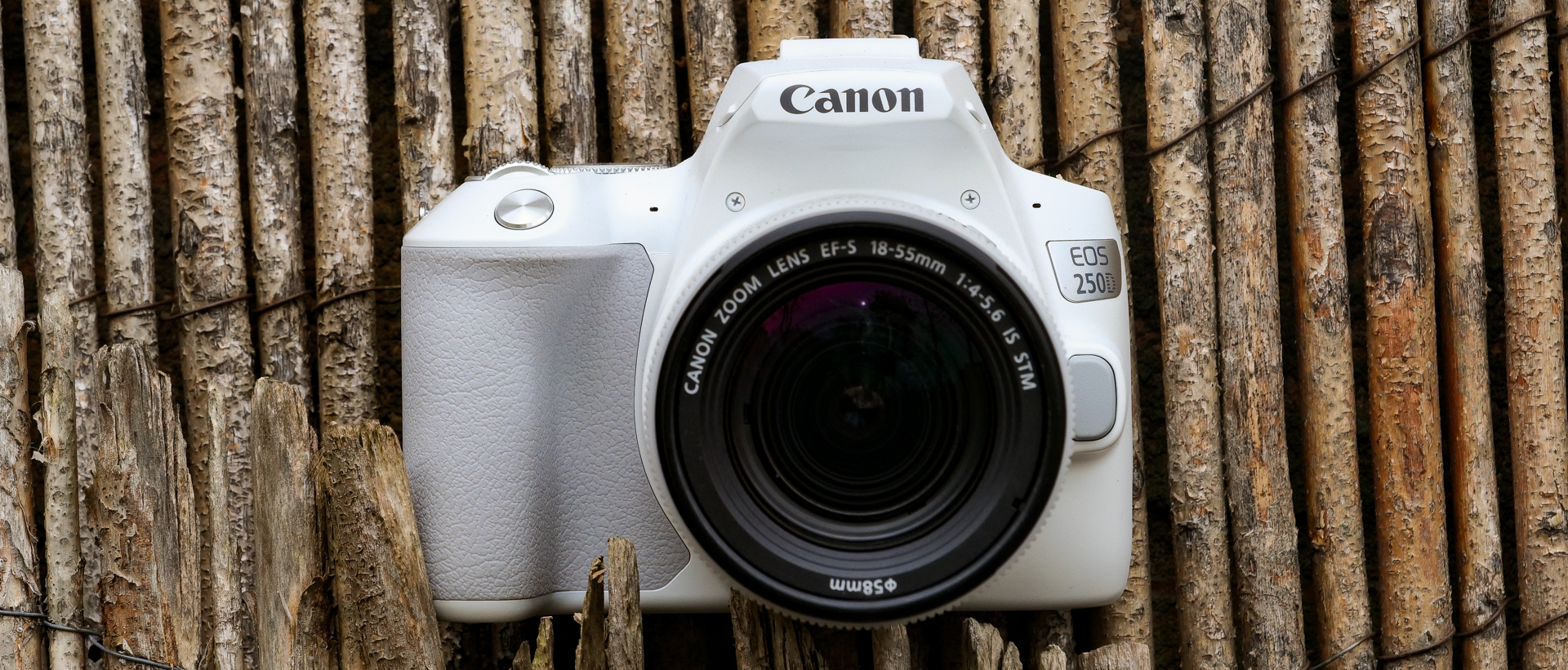TechRadar Verdict
The EOS Rebel SL3 / EOS 250D blends a number of tried-and-tested features with a mount that accepts an endless array of lenses, and its small size, battery life and general performance are all solid. These days, the focus is on mirrorless, but if a traditional setup is what you're after - at least you get a small one with a model like this.
Pros
- +
Excellent battery life
- +
Great Dual Pixel CMOS AF system
- +
Small, light body with good handling
- +
Touch controls implemented well
- +
LCD is very responsive
Cons
- -
Dated 9-point AF system
- -
Awkwardly designed power control
- -
4K video crop and rolling shutter
- -
Kit lens could be optically better
Why you can trust TechRadar
Editor's Note
• Original review date: April 2019
• Replaced in 2022 by the mirrorless EOS R10
• Launch price: $599 / £529.99 / AU$999
• Official price now: $649.99 / £630 / AU$1,249
Update: March 2024. Although it’s now four years old, the Canon EOS SL3 / 250D / 200D Mark II (depending on your region) is still one of our favorite DSLR cameras for beginners. In fact, in our round-up of the best entry-level DSLR cameras, it’s our top pick for buyers on a budget. Canon is no longer developing new DSLR models, which is evidenced by the fact that the EOS SL3’s entry-level successor – the EOS R10 – is a mirrorless camera. All the same, if you prefer the classic handling of a DSLR, we think the EOS SL3 continues to offer excellent value for learners. It’s well-built, lightweight and lovely in the hand. Due to limited stock, you’ll probably need to shop around at online retailers. There are cheaper options out there if you search hard enough, including the EOS Rebel T100 (also known as the EOS 4000D / EOS 3000D), but we think the EOS SL3 is worth the extra outlay.

Although Canon has some even cheaper models right at the bottom of its DSLR line-up in the shape of the EOS Rebel T7 / EOS 2000D and EOS Rebel T100 / EOS 4000D, neither model made much of an impression when we came to test them.
While those two cameras are still the cheapest way into the expansive EOS DSLR system – at least without looking towards the secondhand market – there's another option that gives users a few extra toys to play with, and a little more growing space. And with constant heat from affordable mirrorless cameras, that's only a good thing.
Positioned between the EOS Rebel T6 / EOS 1300D and the more advanced EOS Rebel T7i / EOS 800D, the Rebel SL3, also known as the EOS 250D and EOS 200D II, followed on from the very capable EOS Rebel SL2 / EOS 200D that surfaced two years before it and easily made its way on to our best DSLR camera list. At the time of release, much of the Rebel SL3's core feature set was familiar to us, but it also marked the introduction of 4K video on a DSLR this cheap from any manufacturer.
So what else can be found on the camera?
Features
- 24.1MP APS-C sensor with Dual Pixel CMOS AF
- DIGIC 8 processing engine
- 4K UHD video recording to 24p
Like rival Nikon, most of Canon's DSLRs are fitted with 24MP APS-C sensors, and the EOS Rebel SL3 is the latest recipient. This is believed to be the same sensor that starred in the previous Rebel SL2, and it also features a similar Dual Pixel CMOS AF system built into it.
This system uses pixels in the sensor to perform phase-detect AF, which is the way DSLRs normally focus when you use the viewfinder. By having this on the sensor, it allows the Rebel SL3 to focus quickly when using live view or when capturing videos – something we'll be exploring in more depth later.
The camera is fitted with the same EF mount that has long served Canon's EOS DSLRs, and this accepts both EF-S and EF lenses. Whichever type of optic you choose, the size of the camera's sensor means your lens is subject to a 1.6x crop factor. So, the EF-S 18-55mm f/4-5.6 IS STM lens that's the default kit option with the camera provides an effective focal length of around 29-88mm. Lenses with their own Image Stabilizer (I.S.) systems are particularly desirable here, given the lack of an equivalent sensor-based system inside the camera itself.
The camera can fire bursts of images at a 5fps, which is unchanged from the Rebel SL2, despite the presence of the newer DIGIC processing engine. This burst rate is fairly respectable for entry-level models, but is quite outdated compared to many mirrorless models. If you are somebody that likes to shoot action and/or moving subjects, it might not be the right model for you. Better news is that the Digic engine does, however, support 4K video capture to 24p, although there are a number of restrictions.
There are, for example, no other frame rates to choose from when capturing 4K footage. Videos are also subject to a crop factor, which means you lose a little of the wide-angle view of your lenses when you start recording, although this isn't an issue when recording Full HD or Standard HD videos. You also can't use the Dual Pixel CMOS AF system, unless you're happy to knock resolution down to Full HD. (You can still use autofocus during 4K video recording, it just tends to be less fluid.)
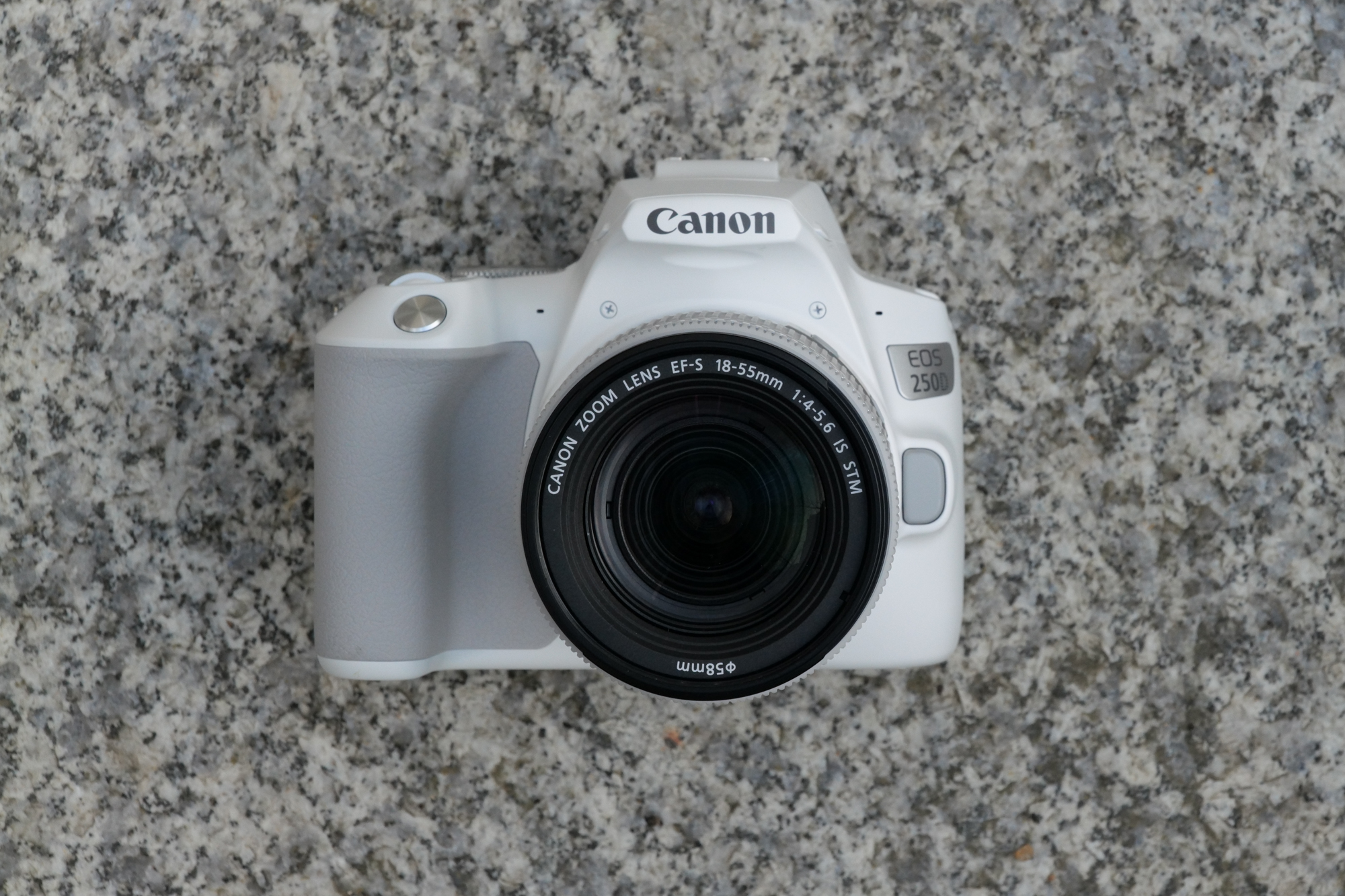
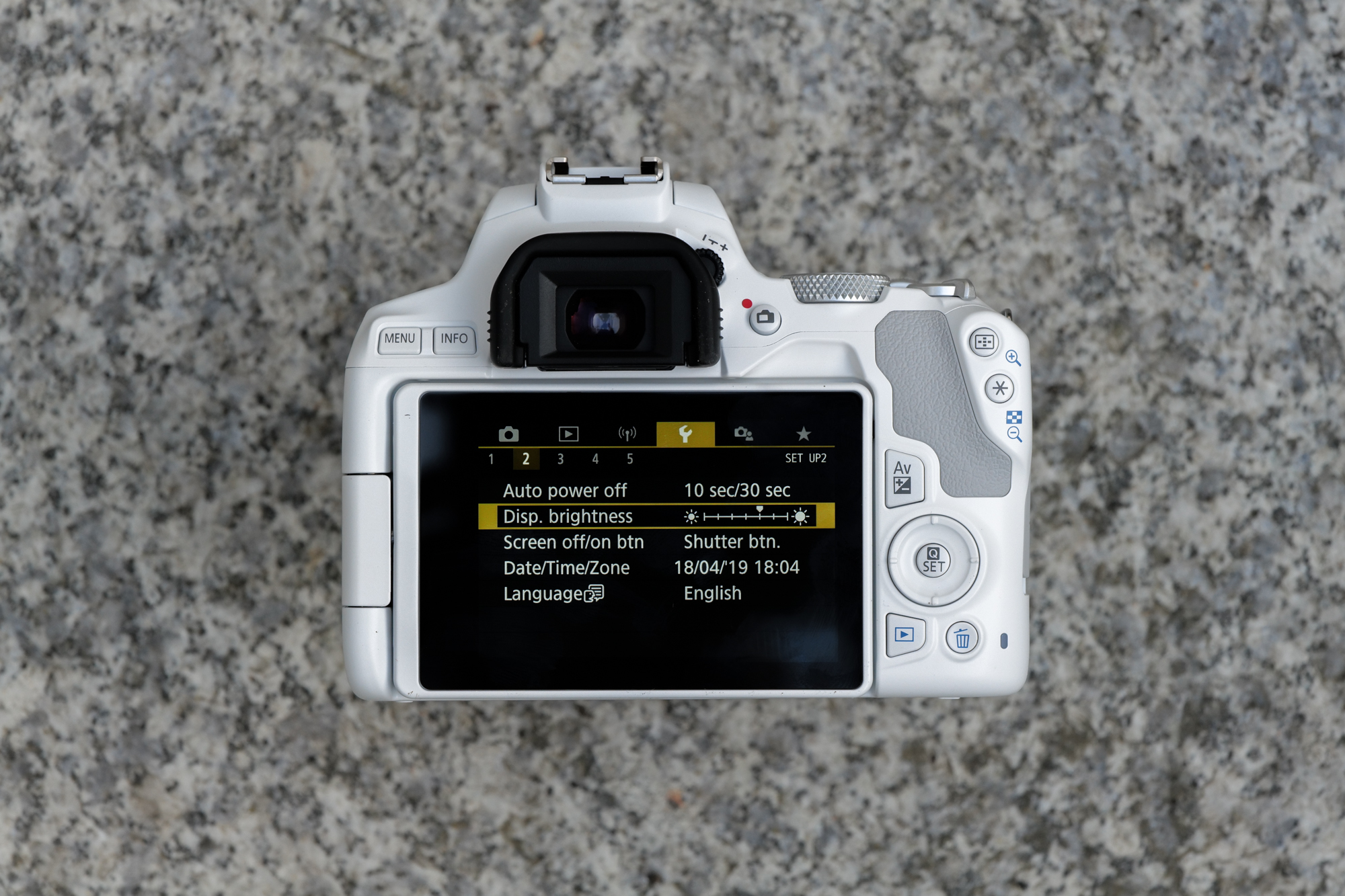

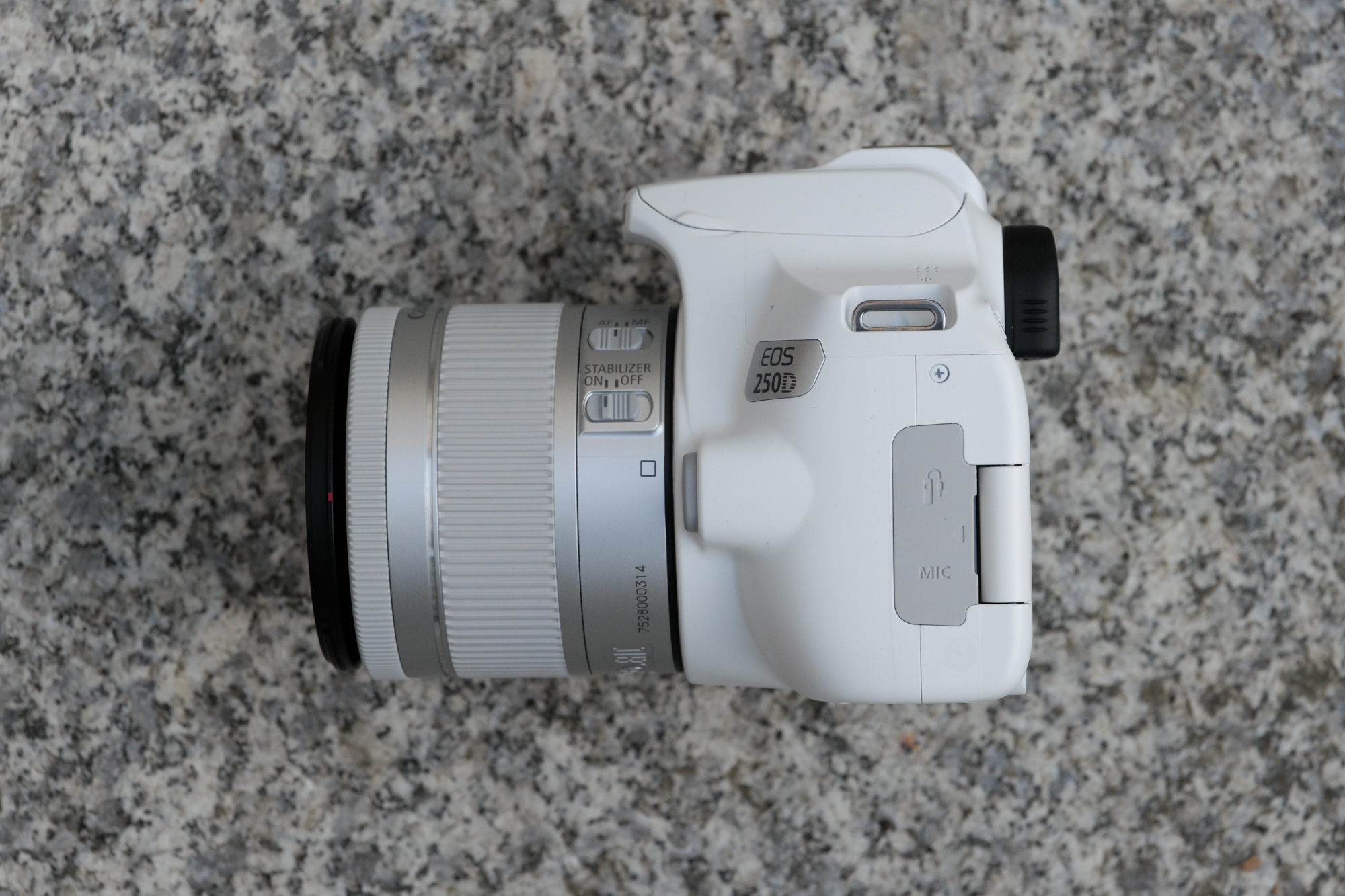
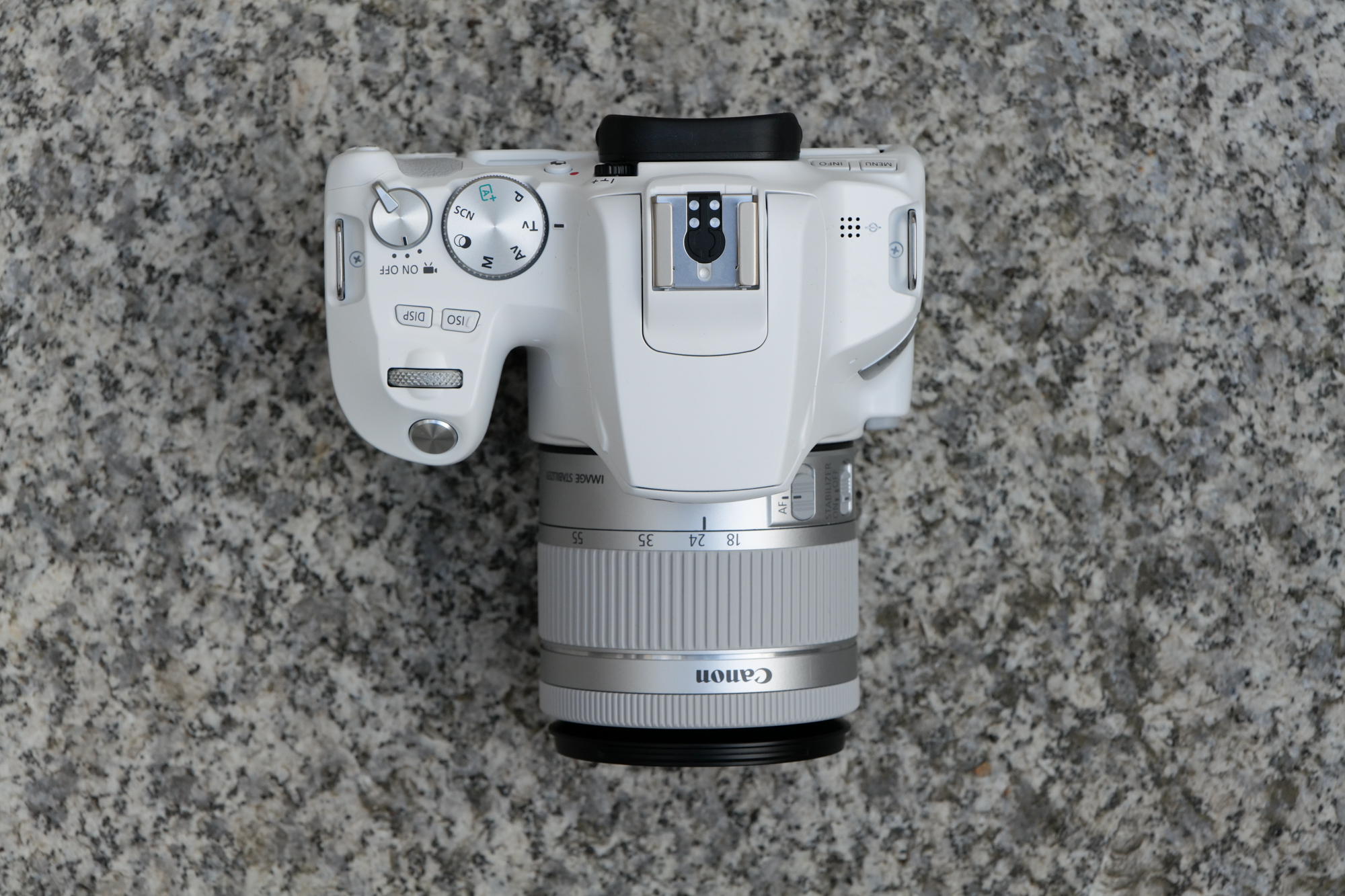
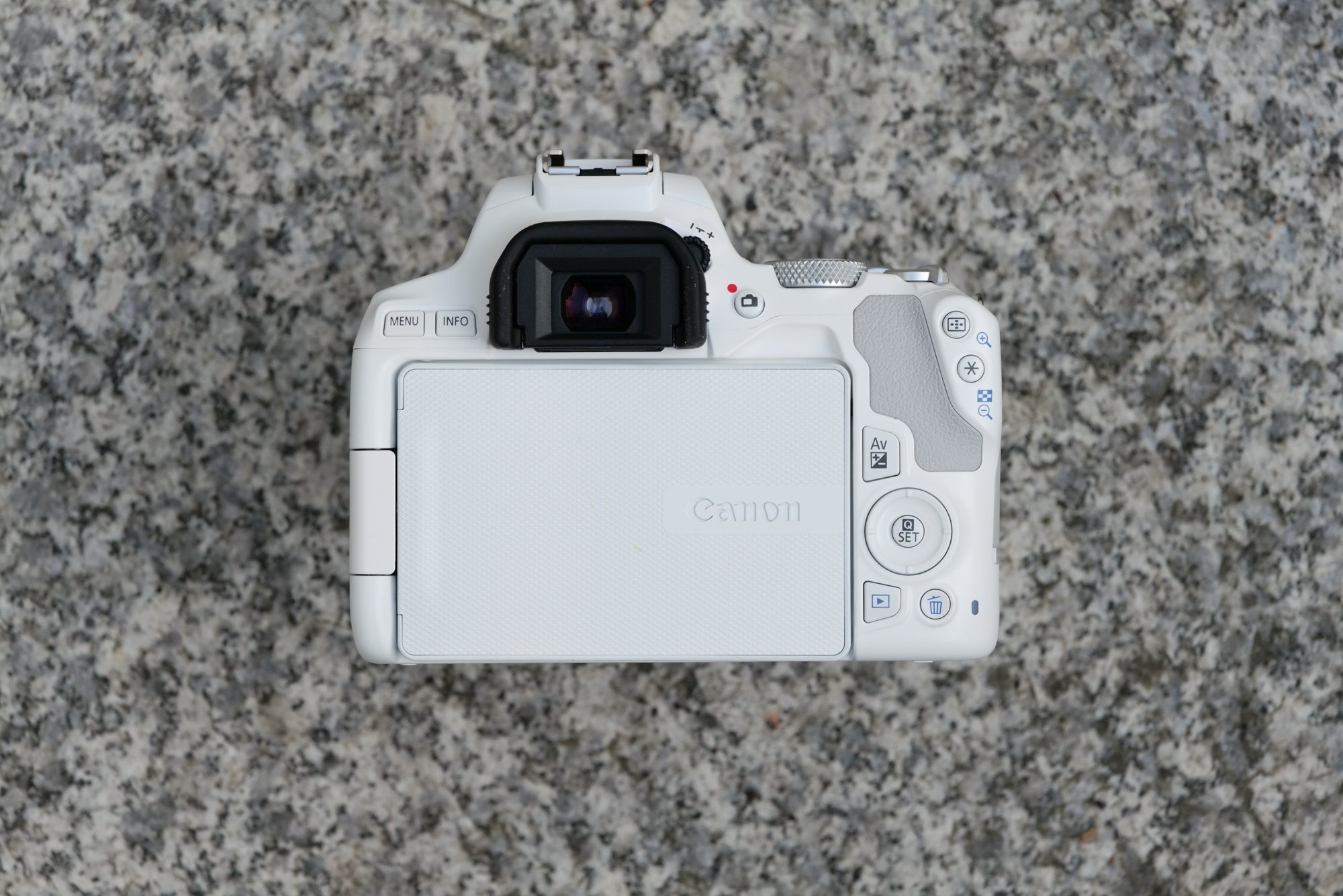

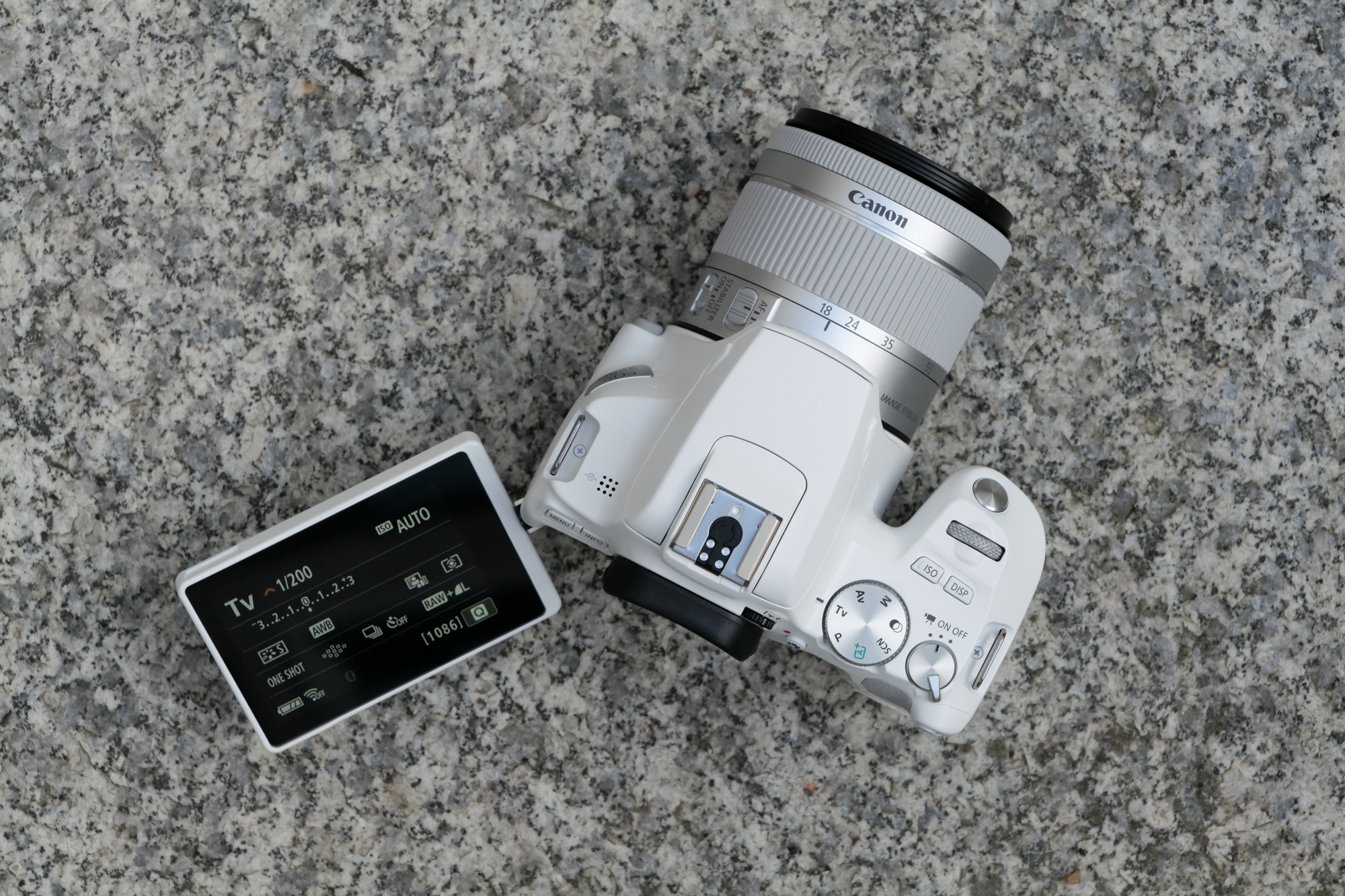
Sensor: 24.1MP APS-C CMOS
Lens mount: EF mount
Screen: 3-inch vari-angle touchscreen, 1.04 million dots
Viewfinder: Pentamirror, approx. 95% coverage
Burst shooting: 5fps
Autofocus: 9-point AF system, Dual Pixel CMOS AF
Video: 4K UHD (up to 25/24p)
Connectivity: USB 2.0, HDMI, Wi-Fi and Bluetooth LE
Battery life: 1,070 shots (with viewfinder)
Weight: Black finish: approx. 449g (including card and battery); White finish: approx. 451g
Metering is handled by a separate 63-zone metering sensor when you're using the viewfinder to compose your images, and this provides the customary evaluative, partial, spot and center-weighted average quartet of options. Those same patterns are available when using live view, although here metering is performed off the main imaging sensor, with a maximum 384 separate zones used.
Picture Styles, meanwhile, allow the user to tailor the color, sharpness, contrast and other parameters to the scene being captured. You can stick with the default Auto mode if you want to the camera to make all these decisions, although options such as Portrait, Landscape, Neutral and Monochrome can be easily called upon should you want a specific look and feel for your images.
Wi-Fi and Bluetooth, both of which were present on the EOS Rebel SL2, are on board, although that camera's NFC functionality has been dropped for this model. Some other smaller features make their DSLR debut here, though, such as the Smooth Skin mode that aims to give subjects a more flattering complexion.
There's a USB port on the right side of the camera as you hold it; it's the older USB 2.0 specification rather than the more recent and speedier USB 3.1, but if you only use Wi-Fi or a card reader to transfer images from the camera, this probably won't be an issue. There's also a mini HDMI socket just above this, while on the left side a door conceals a 3.5mm microphone socket and a further connection for remote releases.
One area where the Rebel SL3 impresses is battery life. This is rated to 1,070 frames per charge (when using the viewfinder), making the camera one of the best in its class in this area
One area where the Rebel SL3 impresses is battery life. This is rated to 1,070 frames per charge (when using the viewfinder), making the camera one of the best in its class in this area.
Putting this into perspective, the Rebel SL2 offered 650 frames per charge, so the step up is significant. If you use live view or record video this figure drops to around 320 frames, which is more or less what you'll find on many of today's mirrorless cameras.
There's just a single card slot, and this is housed with the battery on the underside of the camera. It takes SDHC and SDXC cards that are rated to the UHS-I standard; UHS-II cards will also work, but without any performance advantage.
Editor's Note
• Original review date: June 2022
• Yet to be replaced
• Launch price: $399.99 / £269 / AU$699
• Official price now: $349.99 / £239 / AU$599
Update: February 2024. Although it was launched back in 2020, the Nextbase 622GW is still the top model in the Nextbase dash cam range. It also continues to occupy the top spot in our list of the best dash cams, thanks to its combination of excellent 4K video quality and a comprehensive feature set, including effective image stabilization and clever what3words integration. Those skills do come with a significant outlay, though. If you’re interested in a Nextbase camera but don’t need all of the features offered by the 622GW, it’s worth looking at its sibling models. For example, the 522GW doesn’t have image stabilization, but it records 2K video and includes support for Alexa. It’s also significantly cheaper than the 622GW. That said, if you’re looking for the very best dash cam you can currently buy, we think the 622GW is worth the money. The rest of this review remains as previously published.

